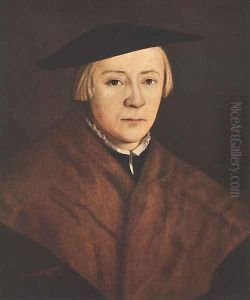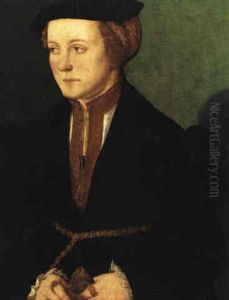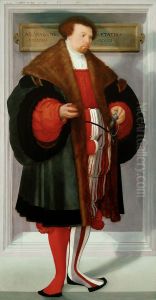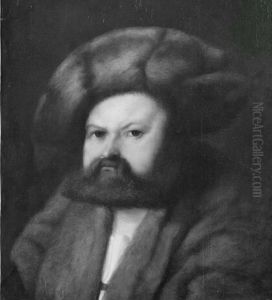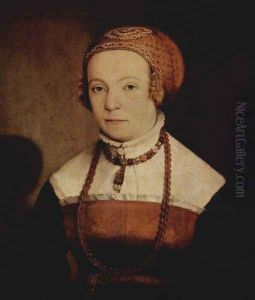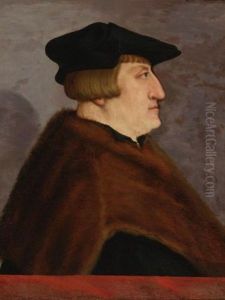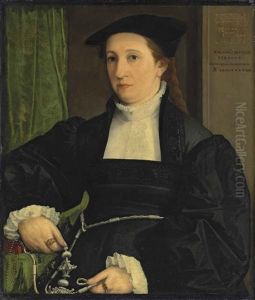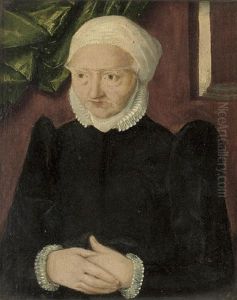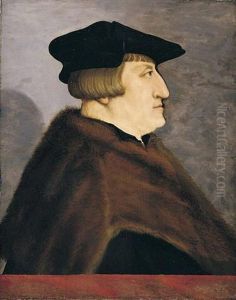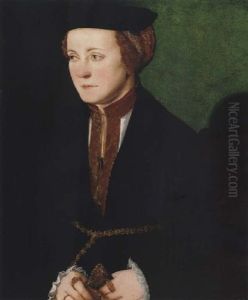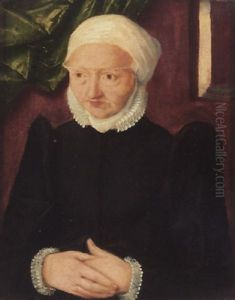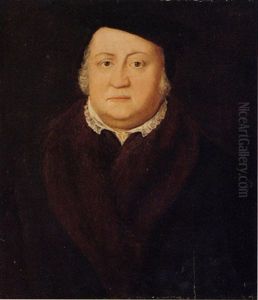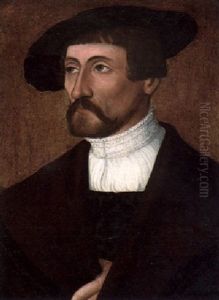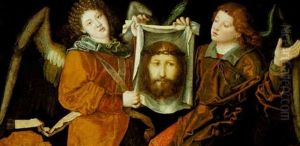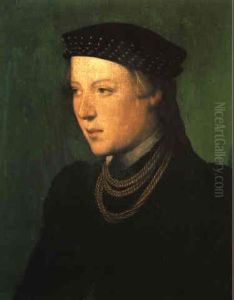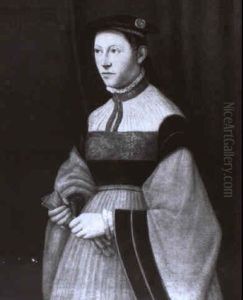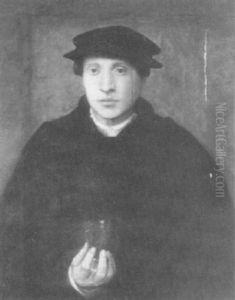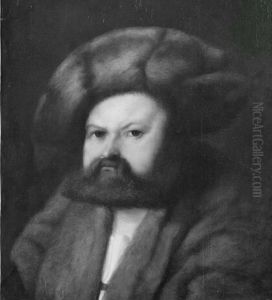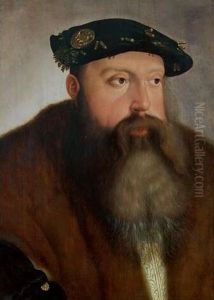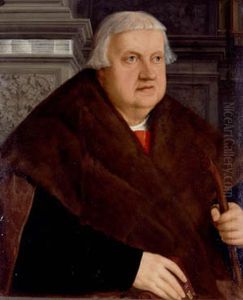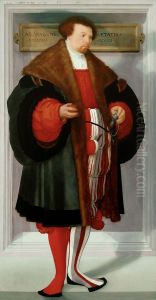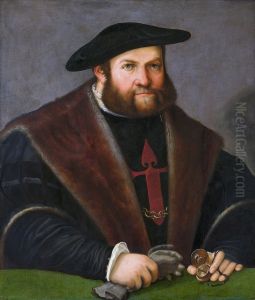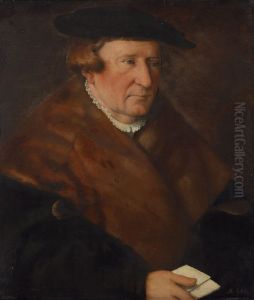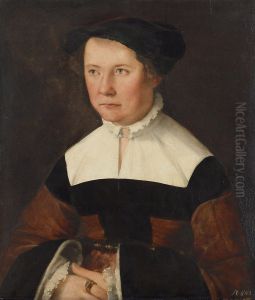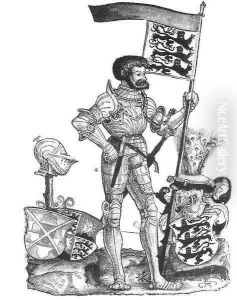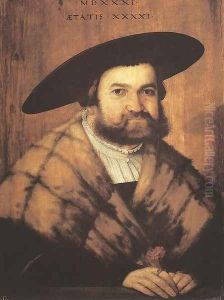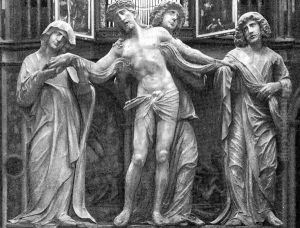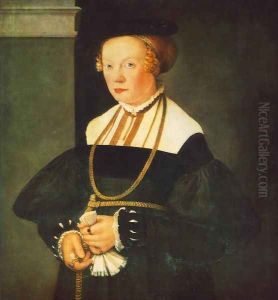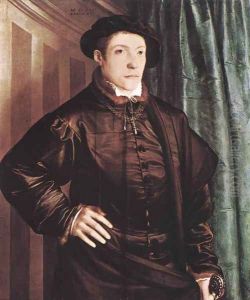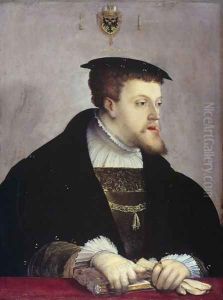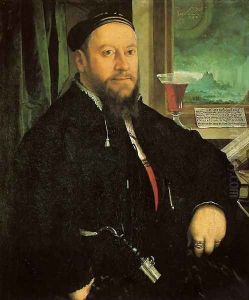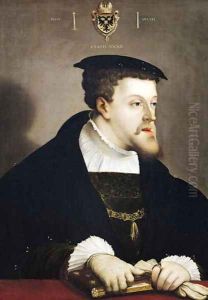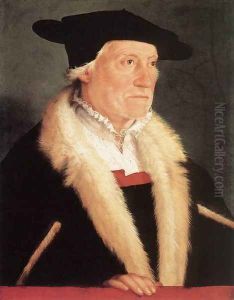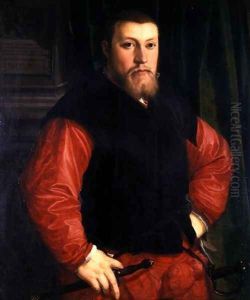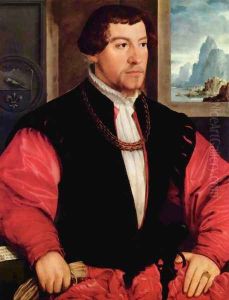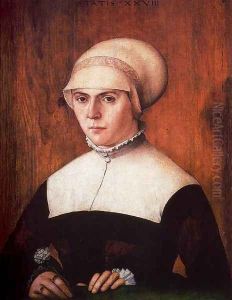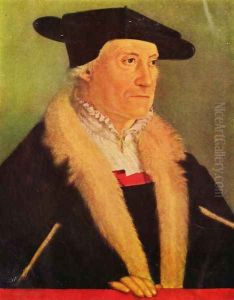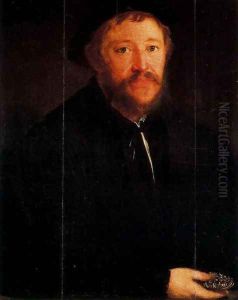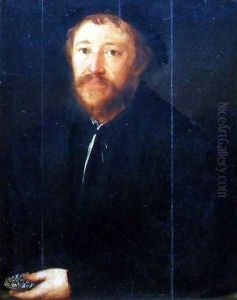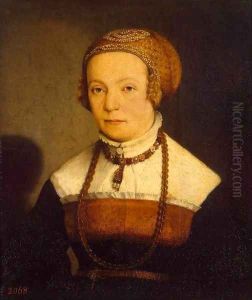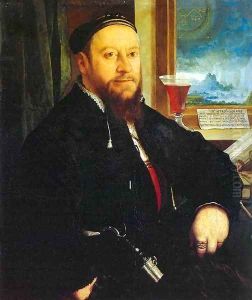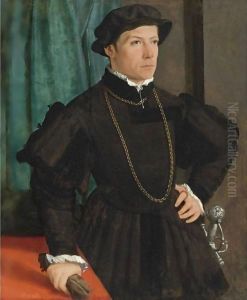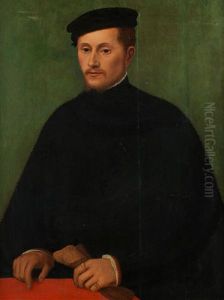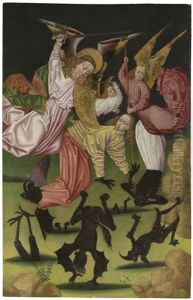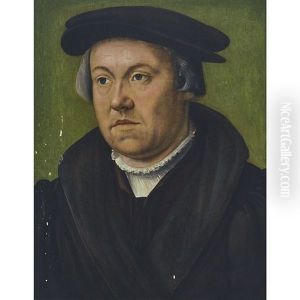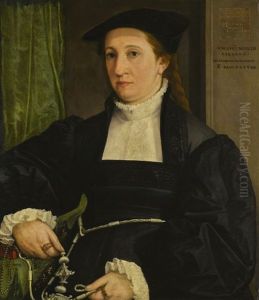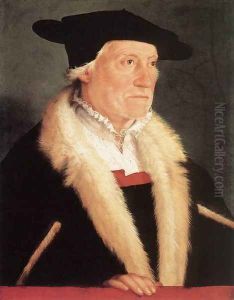Christoph Amberger Paintings
Christoph Amberger was a prominent German painter of the Renaissance period, born around 1505 in Augsburg, which was then one of the richest and most significant cities of the Holy Roman Empire. Amberger was active during a time of great social and artistic change, and his work reflects the transition from the late Gothic to the Renaissance style.
Amberger likely trained with local artists in Augsburg before possibly travelling to Italy to study the works of the Italian masters, which was a common practice for artists of his time. However, the specifics of his training and early career remain unclear. He became a citizen of Augsburg in 1530 and began to establish himself as a respected portrait painter. Amberger's portraits are known for their vivid detail, realistic representation, and subtle use of color.
During his career, Amberger painted portraits of many notable figures of the time, including members of the Fugger banking family, which was one of the wealthiest and most influential families in Europe during the 16th century. He also painted scholars, clergymen, and members of the nobility. One of his most famous works is the portrait of the mathematician and astronomer Johannes Schöner.
Amberger's style was influenced by other German artists like Hans Holbein the Younger, with whom he shares a penchant for meticulous detail and a clear, objective depiction of his subjects. Despite his focus on portraiture, Amberger also produced religious works, although these are less well-documented and studied than his portraits.
The later years of Amberger's life are not well-documented, but it is known that he died in Augsburg. His exact date of death is uncertain, but it is believed to have been in 1561 or 1562. Amberger's legacy is preserved in his portraits, which remain as testaments to his skill and the rich cultural environment of Renaissance Augsburg.
